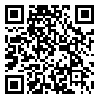BibTeX | RIS | EndNote | Medlars | ProCite | Reference Manager | RefWorks
Send citation to:
URL: http://cjns.gums.ac.ir/article-1-172-fa.html
Background: Normal children understand and use embodiment metaphorical expressions since they start learning a language, but children suffering from William’s syndrome even in adulthood have little understanding of such expressions and they can hardly use them.
Objectives: This study is an attempt to teach embodiment metaphorical expressions of 4.5-5 year old Persian children suffering from William’s syndrome.
Materials and Methods: Ten 4.5-5 year old Persian children with William’s syndrome were studied using dual cards by Bialeka-Pikul in five sessions with required intervals and measuring their amount of their learning through a test of understanding of the Persian language and using such expressions. This method of investigation can be used as a therapeutic protocol in this area. The method used in this study was descriptive-experimental and carried out without making any changes in the variables.
Results: Results of this study showed that after five sessions with this therapeutic method, each of the 10 children with William’s syndrome moved from level one of relative understanding, which means formation of metaphorical structure, to level two of metaphorical understanding of embodiment expressions. In this group, the metaphor of taste with 2.50 points was the highest and the metaphor of shape in the expression with 0.8 point was the lowest.
Conclusion: Control groups in filling the blanks had the highest number of correct answers in the characteristic taste followed by the characteristics smell, speed, and color, and had the least points with metaphorical phrases that reflect the use of minimum idiomatic metaphors.
| بازنشر اطلاعات | |
 | این مقاله تحت شرایط Creative Commons Attribution-NonCommercial 4.0 International License قابل بازنشر است. |


